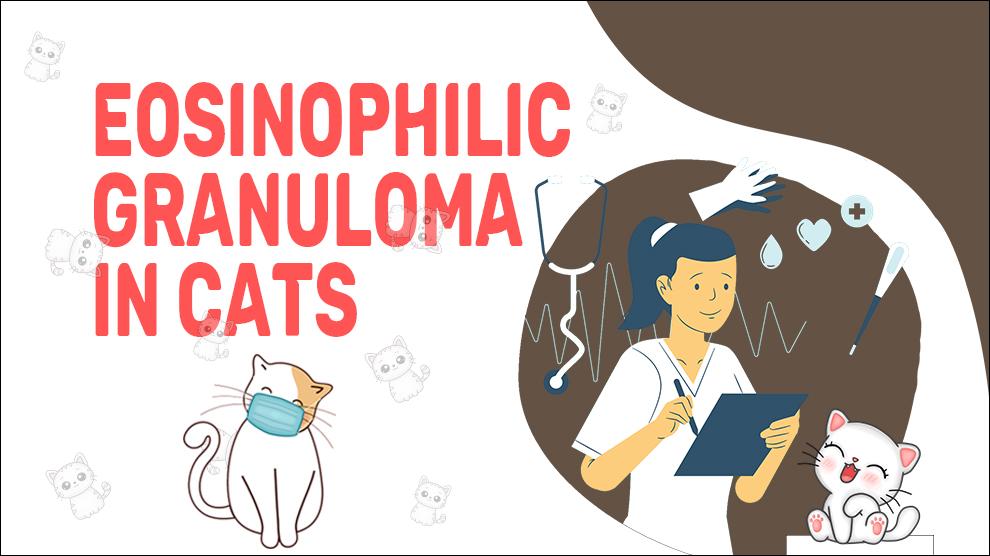What Is Eosinophilic Granuloma In Cats?
Eosinophilic granuloma is a skin disease that can affect cats.
It is a condition that is characterized by the formation of raised, red lesions on the skin, which may appear as small bumps or larger, more prominent areas of inflammation.
While the exact cause of eosinophilic granuloma is not fully understood, it is believed to be an autoimmune disorder, in which the body's immune system mistakenly attacks its own tissues.
Clinical Signs Of Eosinophilic Granuloma In Cats
The most common symptom of eosinophilic granuloma is the appearance of raised, red lesions on the skin.
These lesions may appear as small, round bumps or larger areas of inflammation. They are typically located on the head, neck, or limbs, and may be accompanied by swelling or itchiness.
In some cases, the lesions may ulcerate and become infected, leading to discharge or crusting.
- Skin Lesions
- Lameness
- Pain In Skin
- Swollen Lips
- Redness In Skin
- Swelling Paws
- Pain In Lips
- Edema
- Bleeding In Skin
- Skin Ulcer
- Itching
- Excessive Licking
- Enlarged Lymph Nodes
- Ulcer In Mouth
- Hair Loss
Treatment Options For Eosinophilic Granuloma In Cats
The treatment for eosinophilic granuloma typically involves the use of topical or oral medications to manage inflammation and prevent infection.
This may include the use of corticosteroids, which can help to reduce inflammation and promote healing.
In some cases, antibiotics may be prescribed to treat or prevent infection. In severe cases, surgery may be necessary to remove the affected tissue.
Home Remedies For Eosinophilic Granuloma In Cats
While there are no specific home remedies for eosinophilic granuloma, there are some steps you can take to help manage your cat's symptoms and promote healing.
These may include keeping your cat's skin clean and dry, using a cone collar to prevent them from scratching or licking at the affected area, and providing a comfortable, stress-free environment to promote healing.
How To Prevent Eosinophilic Granuloma In Cats?
There is no known way to prevent eosinophilic granuloma, as the underlying cause of the condition is not fully understood.
However, ensuring that your cat has a healthy diet and receives regular veterinary care can help to maintain their overall health and reduce the risk of developing other health conditions that may exacerbate the symptoms of eosinophilic granuloma.
Affected Cat Breeds Of Eosinophilic Granuloma
Eosinophilic granuloma can affect cats of any breed or age, but it is most commonly seen in younger cats, between the ages of 1 and 5 years old.
Causes For Eosinophilic Granuloma In Cats
Causes:
The exact cause of eosinophilic granuloma is not fully understood, but it is believed to be an autoimmune disorder.
This means that the body's immune system mistakenly attacks its own tissues, leading to inflammation and the formation of granulomas.
While the underlying cause of the autoimmune response is not clear, it is thought that genetics may play a role in the development of this condition.
When To See A Vet For Eosinophilic Granuloma In Cats?
If you notice any raised, red lesions on your cat's skin, particularly if they are accompanied by swelling, itchiness, or discharge, it is important to seek veterinary care.
A veterinarian can diagnose eosinophilic granuloma through a physical exam and may recommend additional testing, such as a biopsy, to confirm the diagnosis and rule out other underlying health conditions.
Food Suggestions For Eosinophilic Granuloma In Cats
Food suggestions for cats with eosinophilic granuloma involve feeding a hypoallergenic diet that does not contain the suspected allergen.
The diet should be high in protein and low in carbohydrates and may include novel proteins such as rabbit or venison.
It is also important to provide a balanced and complete diet that meets all of the cat's nutritional needs.
Some commercially available hypoallergenic cat foods include Royal Canin Hypoallergenic, Hill's Prescription Diet z/d, and Purina Pro Plan Veterinary Diets HA.
Conclusion
Eosinophilic Granuloma is a relatively common skin disease in cats that can be frustrating to treat due to its unknown causes and chronic nature.
The disease can manifest in different forms and affect different parts of the body, but it is generally characterized by raised, red, and ulcerated lesions that can be itchy and uncomfortable for the cat.
Treatment options range from topical and systemic medications to immunosuppressive therapy, and a combination of treatments may be necessary to manage the disease.
Prevention is not always possible, but identifying and avoiding potential allergens can help prevent flare-ups.
Regular veterinary check-ups are important to monitor the cat's condition and ensure that the treatment plan is effective.











